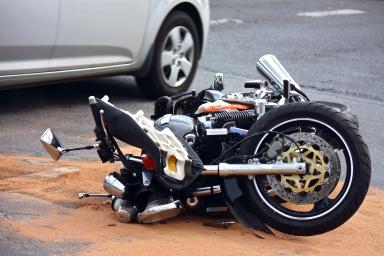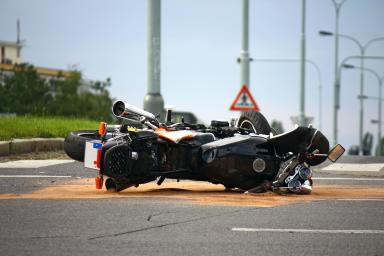Washington State Motorcycle Laws

Several scenic routes can be found in Washington, but some involve dangerous roads that motorcyclists must be aware of. These include the challenging Chinook Pass, Leavenworth Run, Klickitat Loop, and Mt. Baker Road, as well as the North Cascades Highway, whose wintertime dangers involve snow and avalanches.
In the state, only 3% of road users are motorcycle drivers. Despite this low record, motorcyclists have been involved in 1,659 and 1,806 crashes in 2020 and 2021, respectively. Unfortunately, these numbers are rising; according to the Washington State Department of Transportation’s online crash portal, there were 1,954 motorcycle accidents in 2022, with 125 involving fatalities and 514 resulting in serious injuries.
Because of the risks associated with motorcycles, it would be prudent to have a thorough understanding of the state’s traffic laws to avoid mishaps and be aware of the steps to take in case of an accident. This article discusses some of these laws and details, as well as other information that can help motorcycle accident victims understand their legal rights and obligations.
Washington State Motorcycle Driver’s License Endorsement
According to the Washington State Target Zero 2019 Plan, 78% of riders in fatal crashes lack an endorsement, which means they might not have had prior training before riding a motorcycle. A driver must have a Class C, M1, or M2 driver’s license endorsement to legally ride a motorcycle on Washington roads. To receive a learner's permit, one should also pass basic knowledge and skills tests.
To obtain an endorsement for two-wheel vehicles, an individual must be at least 16 years old, have a valid driver's license, and pass the 2W motorcycle operation knowledge and riding skills tests at an approved motorcycle safety training school. There are also approved courses where riders can take these tests. It is essential to note that applicants under 18 must have a parent or guardian sign a consent form at a licensing office.
Those who want to get a 2W motorcycle endorsement may do so online. Permits can also be renewed through the Department of Licensing website within a year of expiration.
Motorcycles with steering wheels or partially or fully enclosed seating areas with safety belts do not require an endorsement. Similarly, those with engines under 49 cc are exempt. Operators of scooters that are 49 cc and under simply need a valid Washington State driver’s license.
Washington State Motorcycle Training Courses
As stated above, motorcycle riders in the state may qualify for permits and license endorsements through training courses. Beginners can take the Basic Rider and Learn to Ride courses.
For those who have some experience and want to improve their riding skills, Intermediate Rider Training, Basic Rider Course 2, Returning Rider, and Learn to Ride Refresher are available.
There are also advanced options for experienced riders, such as the Advanced Rider Course, the Experienced Rider Course, and Street Skills 101.
Washington State Helmet Law
The 2019 Target Zero Plan noted that 8.5% of riders killed in crashes were helmetless. A joint study by the Washington Traffic Safety Commission and the Department of Licensing reveals that riders who wear helmets are 37% less likely to be in a fatal or serious injury accident.
Washington State’s helmet laws require riders to wear headgear certified by the USDOT and in compliance with the manufacturing year standards. Additionally, any person or business renting out motorcycles must have helmets available unless the renter has their own.
Drivers are also advised to use eye protection and protective clothing, if possible. However, it should be noted that the state patrol may change the rules regarding the use of glasses, goggles, and face shields when riding a motorcycle.
Washington State Motorcycle Equipment Requirements
Motorcycle riders must maintain their vehicles and follow equipment limitations and requirements to use them on Washington State roads legally.
A permanent and regular seat must be attached to a motorcycle, and an operator can only carry a passenger if the vehicle is designed for more than one person. Foot pegs and additional bucket seats with seat belts following federal standards are also necessary. In addition, motorcycles must be equipped with horns, warning devices, and theft alarms in good working order to emit a sound that is audible under normal conditions. The theft alarm system can be a whistle, bell, or horn, but not a siren.
A motorcycle’s exhaust system must not be modified to amplify or increase its engine noise above the sound emitted by its original muffler. Mufflers in good working condition must also meet the smoke and air contaminant standards.
The maximum height for handlebars is no more than 30 inches from the operator's seat, and riders can’t drive with both feet on one side of the bike.
Other equipment requirements include mirrors on the left and right sides, turn signals, taillights, headlights, and license plates.
Washington State Motorcycle Law for Driving on Roadways Laned for Traffic
Washington State has established various laws on operating motorcycles on roadways laned for traffic. Riders are entitled to use a full lane and should not be deprived of this right. However, a single lane can only accommodate up to two motorcycles side by side.
The law forbids motorcycle riders from overtaking and using the same lane as the vehicle they are overtaking. In addition, it is illegal to practice lane splitting, which refers to riding between lanes of cars in slowed or stopped traffic. In Washington, motorcycle riders are also forbidden to cling to other vehicles to prevent accidents.
It should be noted that these rules do not apply to police officers performing official duties.
Washington State Motorcycle DUI Law
It is illegal to drive while under the influence of alcohol, cannabis, or other drugs in Washington State. A driver is guilty of DUI if their BAC level is at least 0.08 and they have a THC concentration of 5.00 or higher within two hours after driving. Concentration levels may be determined through an analysis of the operator’s breath or blood.
Drivers under the age of 21 are automatically guilty of a DUI if they are found to have a BAC level of 0.02 or higher and a THC concentration above 0.00.
A DUI is usually categorized as a gross misdemeanor. Meanwhile, DUI violators with prior offenses and those convicted of vehicular homicide, vehicular assault, or out-of-state crimes may be found guilty of a class B felony. Consequences of a conviction include license suspension, fines, community service, and the installation of an ignition interlock device on the offender’s motorcycle.
Washington State Implied Consent Law
According to Washington State’s implied consent law, licensed drivers implicitly agree to submit to drug and alcohol tests when suspected of committing DUI, and refusing to do so is admissible evidence in a DUI trial. This is because the action can be interpreted as an indication of guilt or a lack of cooperation with the law enforcement process.
Washington State Motorcycle Insurance Requirements
All Washington State motorcycle riders must follow the minimum liability insurance requirements to operate on the road. These include:
$25,000 for injuries or death to one person in one accident.
$50,000 for injuries or death to two or more people in one accident.
$10,000 for property damage.
A $60,000 liability bond filed by a surety bond company authorized in the state can be held instead of having liability insurance.
Riders must always bring proof of insurance when driving. Not doing so can lead to a maximum of $450 in fines, a license suspension, and an SR-22 requirement for three years.
In addition, drivers can purchase optional coverage for personal injury protection to help pay for medical costs, lost wages, loss of services, or funeral expenses in the event of an accident. These policies are no-fault coverage policies, meaning that you will be covered whether you are at fault for the accident or not.
Another oft overlooked coverage option in Washington is underinsured motorist coverage. These policies insure that the driver and drivers' passengers are covered whether the at-fault driver has enough coverage or none at all.
As a motorcyclist, it's highly recommended that you carry both personal injury protection coverage and underinsured motorist coverage.
Vehicles exempt from having mandatory insurance coverage include mopeds, publicly owned vehicles, and common or contract carriers with the Washington Utilities and Transportation Commission.
How Much Can Someone Sue for a Motorcycle Accident in Washington State?
Motorcycle accidents can cost victims hundreds of thousands of dollars in economic and noneconomic damages. Economic damages may include lost wages, medical and rehabilitation costs, future medical expenses, loss of use of property, loss of employment, and burial costs. Meanwhile, noneconomic damages refer to nonmonetary losses like mental anguish, emotional distress, and loss of consortium.
Washington State has no caps for economic damages in personal injury cases. The state has repealed the limit on the total value of noneconomic damages, and victims may file for full compensation for their nonmonetary losses.
Moreover, the state does not allow punitive damages in personal injury cases, including those arising from motorcycle accidents. This means victims cannot file claims for additional compensation even when the accident was caused by another party’s intentional or reckless conduct.
If you or a loved one has been involved in a motorcycle accident, it is important to seek legal guidance and representation from an experienced motorcycle accident attorney who can determine the total amount of compensation you are entitled to and fight for your right to receive damages.
Washington State Statute of Limitations for Motorcycle Accidents
Personal injury claims for motorcycle accidents have a three-year statute of limitations in Washington State. Property damage claims also follow this time limit.
Those who have been injured in a motorcycle accident or have a loved one involved in one should be prompt in filing a lawsuit or claim because failure to do so within the prescribed timeframe can result in the loss of one’s right to compensation.
Note that the statute of limitations may vary depending on the specific circumstances of a case, and consulting with an attorney is advised to ensure accurate and up-to-date information regarding your specific situation.
Washington State Is an At-Fault State for Insurance Claims
Washington State follows the at-fault system for insurance claims. This means the at-fault party in a motorcycle accident is primarily responsible for covering the damages incurred by the injured victim, who can file a claim to obtain compensation.
Personal injury protection policies are the first line payor for medical bills, wage loss, funeral expense, and other related expenses regardless of fault. In the event that the other party is uninsured or underinsured, PIP coverage can lessen the financial difficulty to the injured person.
UM (uninsured motorist) and UIM (underinsured motorist) coverage is fault-based coverage. It covers you and your passengers in the event the at-fault party doesn't have insurance or not enough insurance.
In 2023, more than 1 out of every 5 drivers in Washington State had no insurance at all. That means if they cause an accident and you are hurt you will get not compensation unless you are carrying UM and UIM coverage. This is true regardless of the severity of your injuries.
Washington State Is a Contributory Negligence State for Motorcycle Accident Lawsuits
Washington State follows the contributory negligence rule, wherein a plaintiff’s awarded damages may be reduced based on their percentage of fault as long as they are not 100% to blame for their accident.
The rule also means the party found at fault by the court must compensate the victim based on their degree of responsibility. For instance, a driver deemed 80% at fault must pay 80% of the damages the injured party has sustained. Additionally, for multi-vehicle accidents, the defendants may share fault and hold responsibility for their percentage of damages. However, the court can also determine whether two or more individuals can be treated as a single entity for contribution purposes.
Motorcycle riders and other road users involved in an accident are encouraged to consult with an experienced personal injury attorney as soon as possible to ensure they receive the compensation they deserve.
Legal Resources for Washington State Motorcycle Accident Victims
Washington State Bar Association Free Legal Help
This Washington State Bar Association project connects low-income motorcycle accident victims to personal injury attorneys who can protect their legal rights and interests. It has a list of volunteer lawyer programs sorted by county. Moreover, the association has a Moderate Means Program that aims to offer legal solutions with reduced fees to moderate-income plaintiffs.
Washington Law Help
Washington Law Help is a free legal guide for low-income motorcycle accident victims. It provides access to learning materials and tools that can help people get basic information for their case, such as forms and detailed instructions. It has 18 offices throughout the state and a directory connecting people to different legal aid organizations.
Washington Pro Bono Council
The Washington Pro Bono Council is a team of lawyers providing free legal aid to people who don’t know who to contact or who cannot afford a lawyer. It can assist motorcycle accident victims throughout the legal process. The site also contains a directory of volunteer lawyer programs per county.
Washington State Patrol Collision Report Resources
The Washington State Patrol offers information on how motorcycle accident victims and their families can submit civilian reports and check collision statistics. People can also request a collision report online or by mail. They can use this as evidence when seeking compensation from insurance companies or in lawsuits.
Washington State Motorcycle Operator Manual
The Washington State Motorcycle Operator’s Manual offers guidelines for beginners and advanced operators of two-wheel and three-wheel vehicles. It covers topics such as motorcycle endorsements, permits, rider courses, protective gear, and equipment requirements. It also gives an overview of the state’s traffic laws and regulations, street strategies, and roadway management. Additionally, the manual educates drivers on how to ride safely.
Washington State Traveler Information
This website provides access to up-to-date travel data and traffic conditions, including real-time route times, road and bridge construction, and weather information. It can help locals and travelers plan their journeys and make informed decisions while traveling. Additionally, the site can assist road users in navigating local roadways safely and efficiently.
Expertise.com StaffAuthor
Step into the world of Expertise.com, your go-to hub for credible insights. We don't take accuracy lightly around here. Our squad of expert reviewers, each a maestro in their field, has given the green light to every single article you'll find. From rigorous fact-checking to meticulous evaluations of service providers, we've got it all covered. So feel free to dive in and explore. The information you'll uncover has been stamped with the seal of approval by our top-notch experts.

Sofia MiguelReviewer
Sofia spices up the world of personal injury law with her vibrant practice in Puyallup, where she juggles life with her energetic twin boys. A proud veteran, she served in the United States Army Reserves as a military intelligence soldier from 1994-2000. Sofia brings a dash of discipline and a heap of heart to everything she does. Visit: https://sofia-miguel-attorney.com/sofia-k-miguel/


![¿Cuál es la indemnización promedio de las demandas por accidentes de moto? [2023]](https://images.ctfassets.net/k00sbju4hbzq/590XSDSoqNVs6XSMNY5s3G/a969ee3bedaaf9016cec601fc30f495b/average_motorcycle_accident_settlement.jpg?fit=fill&w=384&q=75)

